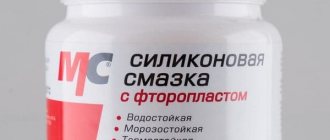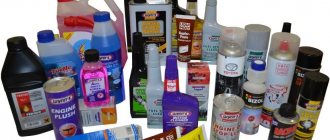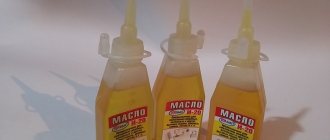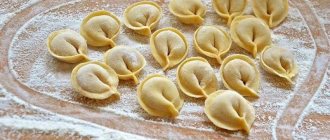Lifehacks
Adviсe
For those who often and for a long time work with baked goods, the question of whether to grease a baking sheet may seem funny and trivial, but even for professional bakers there are a couple of undisclosed secrets. For example, what can be used besides oil , and is it really necessary?
“With Taste” will talk about this in order to reduce the number of hours spent just on soaking and scrubbing dishes for baking . Indelible stains, soot and sticky dough will be a thing of the past.
Life hacks, features, nuances, secrets
Some cooks use bran as a powder, especially suitable for baking bread. The rye product will become tastier. There are housewives who want to play it safe and lubricate silicone containers. Experts recommend evenly distributing fat in the following cases:
If the pastry chef bakes many portions of muffins or cookies in molds lined with parchment, it is recommended to cool the sheets between batches. If this is not done, the following products will burn. To cool the paper, place it under running water.
When baking pies and casseroles, you should choose a glass pan. It will allow you to monitor the dough, its rise and control its readiness.
Alternative methods
Oiled parchment will replace regular parchment or tracing paper - but the bottom will need to be greased with vegetable oil. This litter will protect the baked goods from excess fat. You can also lay out foil and flour packaging (white side facing the dough) - be sure to coat them with oil. Teflon sheet is also sold.
If there is not enough oil, sprinkle the pan with flour or semolina. This will give a crispy crust, which will be especially appreciated by pizza lovers with a thin and brittle crust. An alternative is crackers.
If you are making a cake with chocolate, sprinkle the bottom of the baking sheet with cocoa powder. This will allow the dough to stick to the fine particles rather than to the pan. By the way, this method is used by famous confectioners all over the world.
Confectioners all over the world widely use a special mixture. To prepare it yourself, take flour, ghee and sunflower oil in a ratio of 1:1:1 and thoroughly beat the ingredients to a creamy consistency. If you store the composition in the refrigerator, you can use it within 10 months.
Pies, muffins, pizza, cake layers - all this is cooked in the oven, but for the dishes to turn out tasty, they must be baked and not burnt. The main secrets have been revealed, and now you know how and with what to grease the baking sheet before baking so that the dough does not stick.
Aluminum mold L-11
Now I have three new aluminum molds, which are also called L-11. This marking is assigned to forms depending on their size. In L-11 forms, the height is 100 millimeters, the width is 101 millimeters, and the length is 146 millimeters. It is essentially half the size of a standard brick shape.
These forms are made from aluminum using high pressure casting technology. This ensures the strength of the form and its long service life.
For example, I have aluminum molds that are over 30 years old. These are my grandmother's molds and she baked bread in the oven rather than in the oven. That's why they look tanned in appearance, but that doesn't stop me from baking wonderful bread in them.
Unlike Teflon molds, aluminum molds are scratch-resistant, making them great for everyday use. Most often, such forms are used in bakeries for baking Borodino bread. But you can also bake any tin wheat or rye bread in them.
Coconut refined
One of the few with a high smoke point. Coconut oil is safe to fry in and does not release carcinogens. Therefore, if you want a golden crust, this is the best option. Purified, refined coconut oil does not have that enticing tropical smell, so you can cook meat and vegetables with it. Coconut oil contains saturated fats (don't be alarmed - they are not as harmful as saturated fats of animal origin), but due to them they can be stored for a long time, including outside the refrigerator.
What to lubricate with?
The choice of oil should be taken responsibly, as the wrong product can spoil the taste of the dish.
Vegetable oils
Most often, sunflower oil, always refined, is used to lubricate the baking sheet. Why? The aroma of sunflower or olives makes baked goods less appetizing. Some people use sesame or flax oil. But in this case, you should be careful, because these products have a short shelf life and a bitter taste.
Butter, margarine, spread
Soft butter is best, because it forms a golden brown crust and gives baked goods a pleasant aroma. You can also use margarine, which has no odor. The downside of these options is the calorie content. The same applies to spread (made from milk fat, vegetable oil and other ingredients).
Pumpkin unrefined
Pumpkin oil from fresh seeds can be used everywhere: it complements hot dishes like creamy soup (add to already prepared ones) and is suitable both for dressing salads and as a sauce for meat, fish or dessert. The amount of zinc in pumpkin oil is higher than in seafood, and it is also a source of selenium. Helps normalize metabolism and helps cleanse the body of accumulated toxins. Rich in Omega-3, -6 and -9.
A storehouse of vitamins A, C, E Antioxidants
Vitamin K Responsible for blood clotting
Vitamins B1, B2 Regulate metabolism
Vitamin P Maintains capillary elasticity
What does it look like
The areas of application of parchment are very wide, for example, in the furniture, clothing, fast food, household, and medicine industries. In appearance, this material is thin and transparent, depending on the scope of application it is divided into the following types:
| Parchment brand name | Where is it used? | Additional characteristic |
| "A B C". | Food packaging. | Fatty foods. |
| Production of multilayer packaging. When filtering, laminating. | Withstands temperatures of 230 °C. | |
| For packaging of medications. | You can pack dressings. | |
| “N”, “NZh”, “N-bio”. | Food storage up to 30 days. | Packaging material for long-term storage of products. |
| For packaging low-fat products. | Printed images can be easily applied to paper; it can be laminated, metallized, or laminated. | |
| Packaging of household chemicals. | Can be used for packaging cosmetics. |
How and when should you brush the pies with egg for a rosy and beautiful shine?
Chicken egg is a universal coating for any baked goods. It makes the baked goods both glossy and browned. Very simple! But even in this case, there are nuances that are worth discussing.
What is better to use for lubrication - a whole egg, yolk or white?
If you want yeast pies or buns to acquire a golden, glossy crust , it is recommended to use a whole egg to glaze them. To do this, you need to drive it into a small deep bowl and shake it with a hand whisk or fork. There is no need to vigorously beat until fluffy, since bubbles will remain on the surface of the dough, which will turn into unevenness as a result of baking. The top of the pies will not be perfectly smooth and shiny. This option for lubricating pies is universal and saves time, because... There is no need to divide the egg into its components. In addition, more of the lubrication mixture itself comes out.
When the “varnish” top of baked goods made from yeast dough is not important, but you just want to get a beautiful blush , it is better to grease the dough with yolk, without white. However, egg yolk in its “pure” form is usually not used, since the mass will be too thick and will be applied to the pies in a too dense, thick layer. Most often, a little (1-2 tsp) water or milk is added to it, and then ground until smooth. This mixture spreads more easily over the dough and gives an intense golden brown color after baking.
Protein is used when baked goods need to be given shine and a crispy crust . Traditionally, it is used to lubricate products made from shortcrust pastry, which itself turns golden brown due to the large amount of fat in the composition, i.e. it does not require additional lubrication with yolk. Lightly beaten egg whites are applied in a thin layer before placing the baked goods in the oven. There is no need to achieve a stable foam when whipping the protein mass. It is enough for the protein to lose its elasticity.
More on the topic:
Make friends with this yeast dough - and always bake delicious pies, soft and light as feathers
Technology of applying egg mixture to pies before cooking in the oven
Brush the pies with the glazing mixture carefully, using smooth movements, using a soft pastry brush. The layer should be as thin as possible, but continuous, without sagging or bald spots. Then the ruddy coating of the pies will be uniform and appetizing. First, you need to coat the top of the products, and then the side parts, so that the baked goods become golden brown on all sides.
Another important point. The egg and other frosting components should not just come out of the refrigerator, but should be allowed to warm to room temperature. Otherwise, yeast baked goods may not be suitable when in contact with cold mixture.
When is it better to brush the dough with egg so that the baked goods brown and rise well?
It is advisable to grease yeast buns or pies after proofing
, just before going into the oven, when the molded products have already risen well. After applying the egg layer, you need to take 5 minutes to dry it.
If you lubricate the product immediately after molding, the glazing may interfere with proper proofing.
Some professional bakers advise frosting the baked goods 7-10 minutes before they are ready.
when she grows up thoroughly. Then the crust will be as uniform as possible, without cracks or pale areas.
It is also advisable to grease large pies or rolls shortly before the end of baking. They take longer to bake than standard pies, so the egg crust may burn during this time.
How to grease the top of the pies if you don’t have a pastry brush?
Ideal for brushing baked goods with egg or other mixtures are special brushes with soft bristles or a silicone tip. You can replace the brush:
- Goose, chicken or duck feather (you can tie several pieces together). To do this, poultry feathers are poured with boiling water, washed and dried.
- Folded several times with gauze or bandage.
- A paper napkin.
- A disposable brush made of “office” paper. You need to roll up a blank sheet and make many frequent cuts on one side with scissors - you will get something like a brush.
- A food bag. You need to put it on your hand and distribute the egg among the preparations. It won't be as neat as using a brush, but sometimes this option really helps.
More on the topic:
Simple recipes for delicious pies with jam in the oven - the filling will not leak out
Brush or hands?
The technique depends on the type of oil:
- It is most convenient to distribute vegetable oil with a silicone brush - then it is easy to wash, and your hands are clean for the next task or leafing through the recipe.
- “Granny’s” alternative to a brush - a feather, a brush made of natural hair, half a potato, cut side down on a fork.
- There is no need to melt the butter or spread - just prick it with a fork and grease the baking sheet. If you don't want extra calories, make the layer thinner.
- If neither tool is comfortable for you, apply it with your hands, but it’s better to wear gloves - so as not to wash and leave greasy marks on dishes and kitchen appliances, and above all, on a recipe book and phone.
Tip: If the dough is yeast, be sure to work the walls, as it will rise and stick.
Rules for selection and operation
Today, most hypermarkets sell many different molds made from this material. They differ in size, color, density, and geometric shapes. When choosing, you should focus primarily on the quality of the material. The denser it is, the longer it will serve its owner. Thin ones, of course, are much cheaper, but they are also impractical: they quickly wear out, tear, and the dough often sticks to the walls.
Next, the responsible buyer faces a difficult choice of color. You can be calm in this matter, since during production most well-known manufacturing plants use only safe dyes that do not affect the final quality of the dish. They do not lose their brightness due to sudden temperature changes or frequent washing. At the same time, the porous structure obliges the housewife to thoroughly rinse all corners after each use with an anti-grease detergent.
Storing them is quite simple: if there is no special cabinet in the house, they are stacked or rolled.
Over time, the container may lose its original shape, become discolored, its surface loses its gloss and shine, and becomes friable - this is the main indicator of the need to get rid of it and buy a new one.
Unrefined pine nuts
Another record holder for the content of nutrients. In Russia, cedar oil is produced by first (cold) pressing from Siberian cedar nuts. It will give dishes a pleasant nutty taste and aroma, suitable for dressing salads or becoming an unusual ingredient in sauce. Contains Omega-3, -6, -7 and -9 acids.
Vitamin A Antioxidant
Vitamin E Antioxidant
Vitamin D Needed for calcium absorption
Vitamins B1, B2 Regulate metabolism
Vitamin B3 Promotes digestion
Unrefined walnut
The best walnuts for oil production in Russia are supplied by Tajikistan. Try to include this oil in your morning diet: your usual porridge or cottage cheese will acquire a rich nutty note. Omega-3 and -6 acids.
Vitamins A, E, C Antioxidants
Vitamin F Prevents blood clots
Vitamins B1, B2, B6 Regulate metabolism
Vitamin B3 Promotes digestion
Vitamin B9 Responsible for cell growth and maintaining DNA integrity











